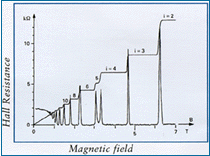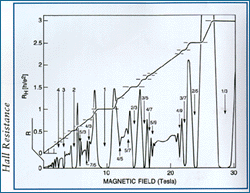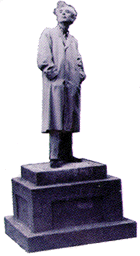Practice and theory
|
|
For more than 150 years we have used electrons for practical purposes. Yet they were only discovered in 1897. Early models described electrons in a metal as a gas. In 1956 the Russian physicist Lev Landau (Nobel Prize 1962) explained why electrons in a metal behave like nearly independent particles. Landau provided a model which can predict how electrons behave in increasingly sophisticated electronic applications. The whole microelectronics industry is based upon knowledge of how electrons move. First practice, then theory, then practice again in constant interplay. This is the stuff that science is made of. |
|
|
| The Hall Effect
A magnetic field through a conductor creates a voltage (VH) at right angles to both the direction of current and the magnetic field. |
 |
|
The integer quantum Hall effect Near absolute zero, in powerful magnetic fields and with the electrons forced to move in a plane, the Hall effect changes in steps. |
 |
|
The fractional quantum Hall effect In Horst Störmer’s and Daniel Tsui’s experiments several new, unexpected notches and plateaux appeared in the quantised Hall effect. |
 |
|
|
Nobel Prizes and laureates
Six prizes were awarded for achievements that have conferred the greatest benefit to humankind. The 14 laureates' work and discoveries range from quantum tunnelling to promoting democratic rights.
See them all presented here.

